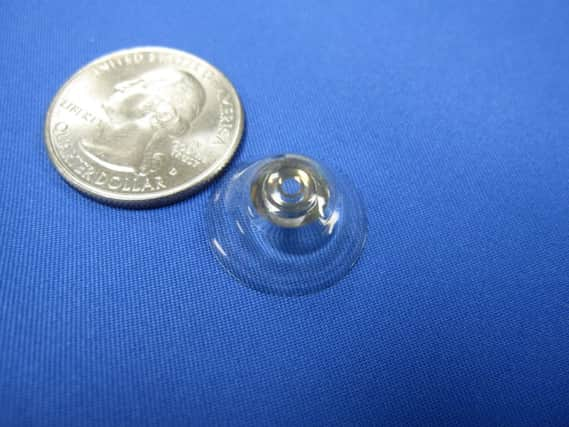Telescopic contact lens creates superhero vision


The magnifying lenses, produced with the help of American defence funding, sound just the job for special agents or cyborg soldiers.
But in reality they are much more likely to help elderly people with fading sight.
Advertisement
Hide AdAdvertisement
Hide AdThe lenses consist of two parts: an inner area which provides normal vision and an outer one which magnifies what is seen around threefold.
Switching from one to the other involves donning a special pair of glasses and simply blinking on the left or right side.
Dr Eric Tremblay, from the Federal Polytechnic School of Lausanne in Switzerland, who led the research, said: “We think these lenses hold a lot of promise for low vision and age-related macular degeneration (AMD).
“A lot of people with severe AMD are really desperate for things they can try. The lenses would mostly be used for distance work, maybe when driving, and also for recognising faces.”
So far, five volunteers have worn the prototypes, developed with support from the US Defence Advanced Research Projects Agency (Darpa).
Speaking at the annual meeting of the American Association for the Advancement of Science (AAAS), Dr Tremblay said: “Darpa fund things that are really out there – forward-thinking stuff.
“They’re really interested in super-vision. They’d like to produce a pair of binoculars you can put on in the blink of an eye, which is really cool but it’s further than where we are today.”
The lens system works by using polarised light to switch from normal to magnified vision.
Advertisement
Hide AdAdvertisement
Hide AdSensors on the glasses respond to reflected light bouncing off the contact lenses by allowing only those rays polarised in a certain direction to reach the lenses.
Each lens component is sensitive to a different “twist” of polarised light.
The volunteers reported that they could see with the lenses and glasses, but their vision was a little blurred.
Dr Tremblay said it might be two more years before the system is good enough to be used to help patients with AMD.
“People with AMD use their peripheral vision to see to the side of their blind spot,” he added. “When they try to read, it’s difficult because your visual acuity really falls off away from the centre.”
The next stage in the project is finding a way to make the lenses more breathable so they are less irritating to wear.
AMD is a painless eye condition that generally leads to the gradual loss of central vision but can sometimes cause a rapid reduction in vision. It affects approximately 500,000 people in the UK.